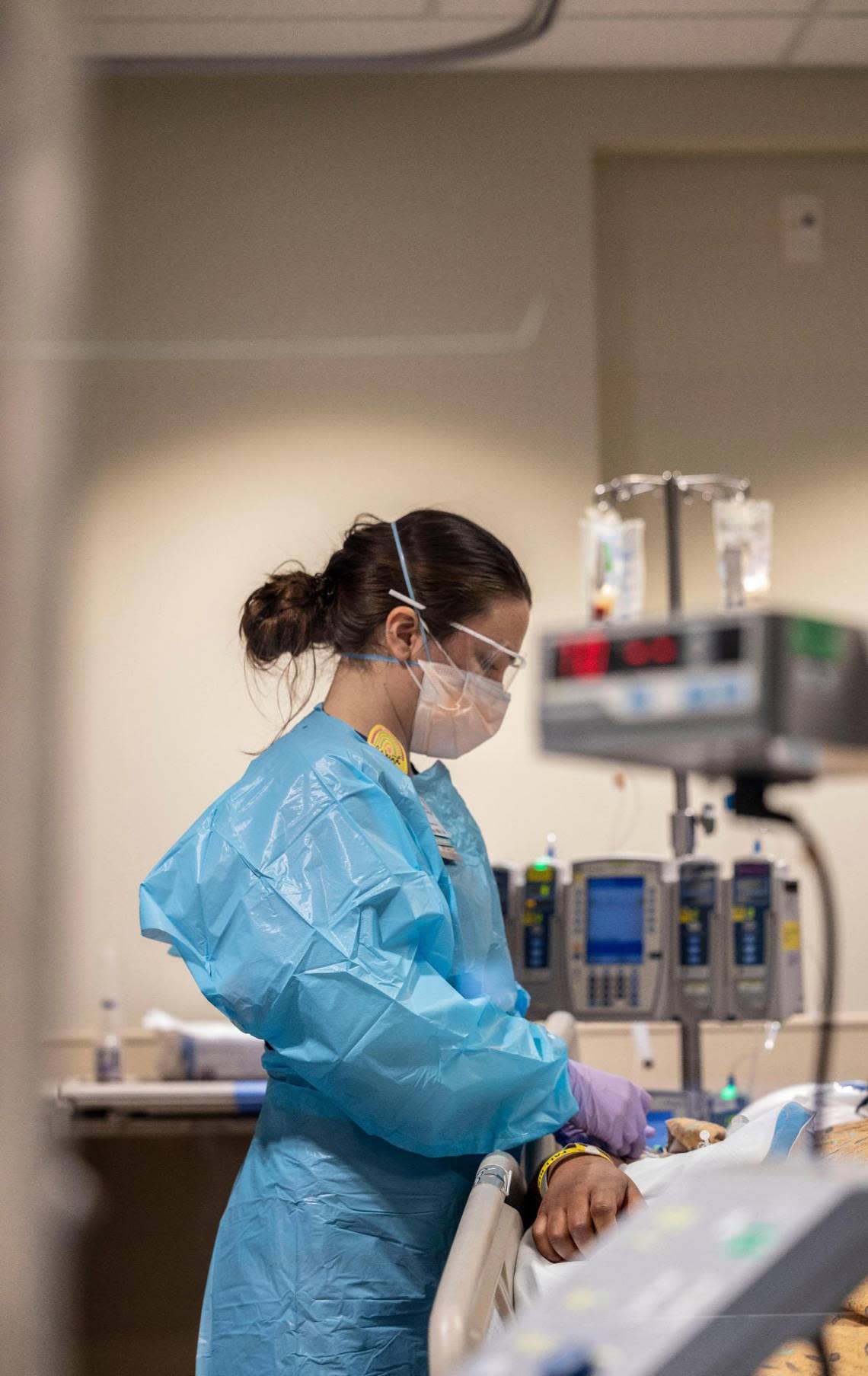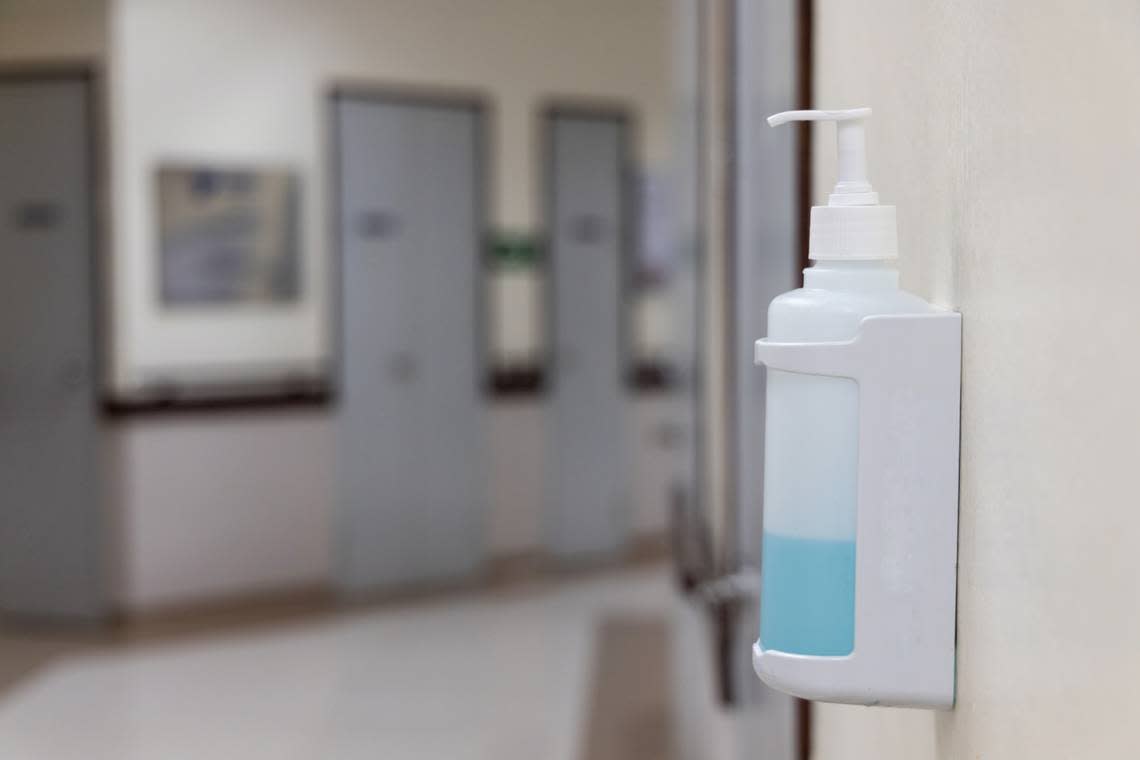Adults with RSV are hospitalized 10 times more than usual this year. That should worry us
For months, Texas has seen a surge of respiratory syncytial virus that has sent thousands of babies and toddlers to the hospital. But it isn’t just impacting kids — older adults, and adults with chronic disease, are also getting severely ill from RSV.
This year’s RSV hospitalization rate for older adults is 10 times higher than usual at this point in the season, per the Centers for Disease Control and Prevention.
“This is just the beginning of the surge, so we expect to see a lot of older adults hospitalized and dying, and it’s really important for people to know that while it’s incredibly serious in little kids and really scary, it also impacts older adults,” said Lindsay Clarke, vice president of the Alliance for Aging Research.
While some adults can have RSV without knowing it, or quickly recover after lots of rest and fluids, other adults who are immunocompromised due to disease or age can get seriously ill with RSV.
“We are all about to consider what our holiday plans look like and people are gathering in numbers that we haven’t seen in a couple of years, and little ones could definitely bring RSV to their grandparents, for instance,” Clarke said.
With the spike of RSV cases in Texas, and holiday gatherings imminent, it’s important to know what to look out for and what precautions to take so you can keep yourself and your loved ones safe.
How common is it for adults to get RSV?
Every year, an estimated 2.2 million seniors in the U.S. contract symptomatic respiratory syncytial virus, 177,000 are hospitalized and around 14,000 die of it.
Those numbers could be even higher, experts say, because adults aren’t usually tested for RSV unless they’re hospitalized. Unlike for COVID, home diagnostic tests for RSV aren’t readily available. And symptoms look almost identical to those of a cold, flu or COVID-19.
Texas Department of State Health Services spokesperson Douglas Loveday said that the agency does not know exactly how many adults have contracted RSV this season.
“RSV is not a notifiable illness in Texas, which means not all cases are reported. The data we have is provided by a volunteer network of providers but is incomplete and really just gives us a picture of RSV activity/trends in Texas,” Loveday said. “Also, those infected (especially adults) may not experience symptoms or the symptoms may be mild, so they will not seek medical care or be tested for RSV.”
The severity of the illness is often likened to the flu.
“It can have an impact in terms of hospitalization, mortality in persons 65 years of age and older, similar to that of influenza,” Atmar says.
By comparison, the flu affects a somewhat greater population of 1.4 to 5.1 million American seniors, resulting in 28,000 to 467,000 hospitalizations and 12,000 to 43,000 deaths. Older adults, however, can get vaccinated against the flu but not against RSV because that vaccine isn’t available yet.
What causes adults to get RSV?
The highly contagious respiratory viral infection is spread person-to-person through droplets from coughs and sneezes as well as through touching surfaces with those droplets and touching the eyes, nose or mouth. Individuals can be contagious with RSV days before exhibiting symptoms, putting seniors at risk of severe illness.
“Most little kids have actually had it by the time that they’re 2 and then when we have it as older children and then middle life it can often just manifest as a common cold,” Clarke says. “But when we’re older, it’s a combination of things — our immune systems naturally decline so we’re not as able to fight off viruses, but then also we’re more likely to have chronic diseases that either compromise our immune systems or make the complications of viruses like RSV that much more severe.”
While young, healthy adults can contract RSV, it’s often mild and cold-like for them. But for adults over 65 and those with chronic diseases, it can cause significant lower respiratory tract illness that requires them to be hospitalized and can result in death, says Dr. Robert Atmar, professor of infectious diseases at Baylor.
What are RSV symptoms in adults?
RSV symptoms are similar to other respiratory infections, meaning it can look like a cold or flu. They include:
Coughing
Sneezing
Runny or stuffy nose
Sore or scratchy throat
Low-grade fever
Decreased appetite
Phlegm
Headaches
Fatigue
Symptoms can worsen for higher risk individuals, progressing from dehydration, wheezing and shortness of breath to pneumonia (lung infection) and bronchiolitis (inflammation of the airways and lungs).
“That’s typically what you’re seeing is sending folks to the hospital is when suddenly there’s labored breathing,” Clarke said.
The main difference between the flu and RSV, according to Atmar, is that people who have RSV are less likely to have a fever or as high a fever as those with the flu. You can ask your doctor to administer an antigen or PCR test, with the latter being more effective. If you can’t get to a doctor, you can order an at-home PCR test from Labcorp, which can tell you if you have COVID-19, the flu or RSV.
How long are adults contagious with RSV?
The CDC says that people infected with RSV are usually contagious for three to eight days. They may become contagious a day or two before showing symptoms.
Individuals with RSV typically feel better within one to two weeks, though those with compromised immune systems can be contagious even after symptoms stop, for as long as four weeks. The cough can persist longer than the other symptoms.
How do you treat RSV in adults?
If you have RSV symptoms, you should get better through getting plenty of rest and staying hydrated, but it’s important to keep an eye on serious symptoms like labored breathing, wheezing, chest pain and high fever, especially if you’re at risk for severe RSV illness. If these symptoms do manifest, seek medical care right away.
For mild to moderate RSV, doctors treat the symptoms of the infection, using antipyretic to reduce fever, analgesic to relieve muscle aches, a decongestant for nasal congestion and antitussive to supress coughing. For severe lung infections caused by RSV, an antiviral drug called ribavirin is often used.
While there are currently no approved RSV vaccines in the U.S., there are several in the pipeline that could be available in 2023. Pfizer is developing an RSV shot for older adults, which in August was shown to be 85.7% effective. A British drugmaker, GSK, developed an RSV vaccine for seniors that was shown to be 82.6% in October. The Food and Drug Administration is expected to make a decision on its approval by May.
“Hopefully next fall and winter, we’ll be having a different conversation about how to protect ourselves,” Clarke says.
Tips for prevention
Many of the precautions taken to prevent COVID, like masking and social distancing, can be used to prevent RSV.
“One of the things we found out during the COVID pandemic is that the measures that we took to prevent transmission to COVID significantly impacted transmission of RSV,” Atmar said. “Basically the first year of the pandemic, the RSV season seemed to go away. And then as people were relaxed those measures that they had taken, we saw transmission.”
To lower your chances of getting RSV, or spreading it if you have it, experts say you should:
Stay home if you’re exhibiting symptoms.
Avoid close contact and sharing personal items with people who have cold-like symptoms.
Wear a mask in crowded indoor settings and around young children.
Wash your hands with soap and water for at least 20 seconds or disinfect your hands with alcohol-based sanitizer consistently.
Keep your unwashed hands off your eyes, nose and mouth.
Cover your mouth and nose with a tissue or your upper shirt sleeve when coughing or sneezing.
Wipe down frequently touched surfaces and objects with disinfectant.


